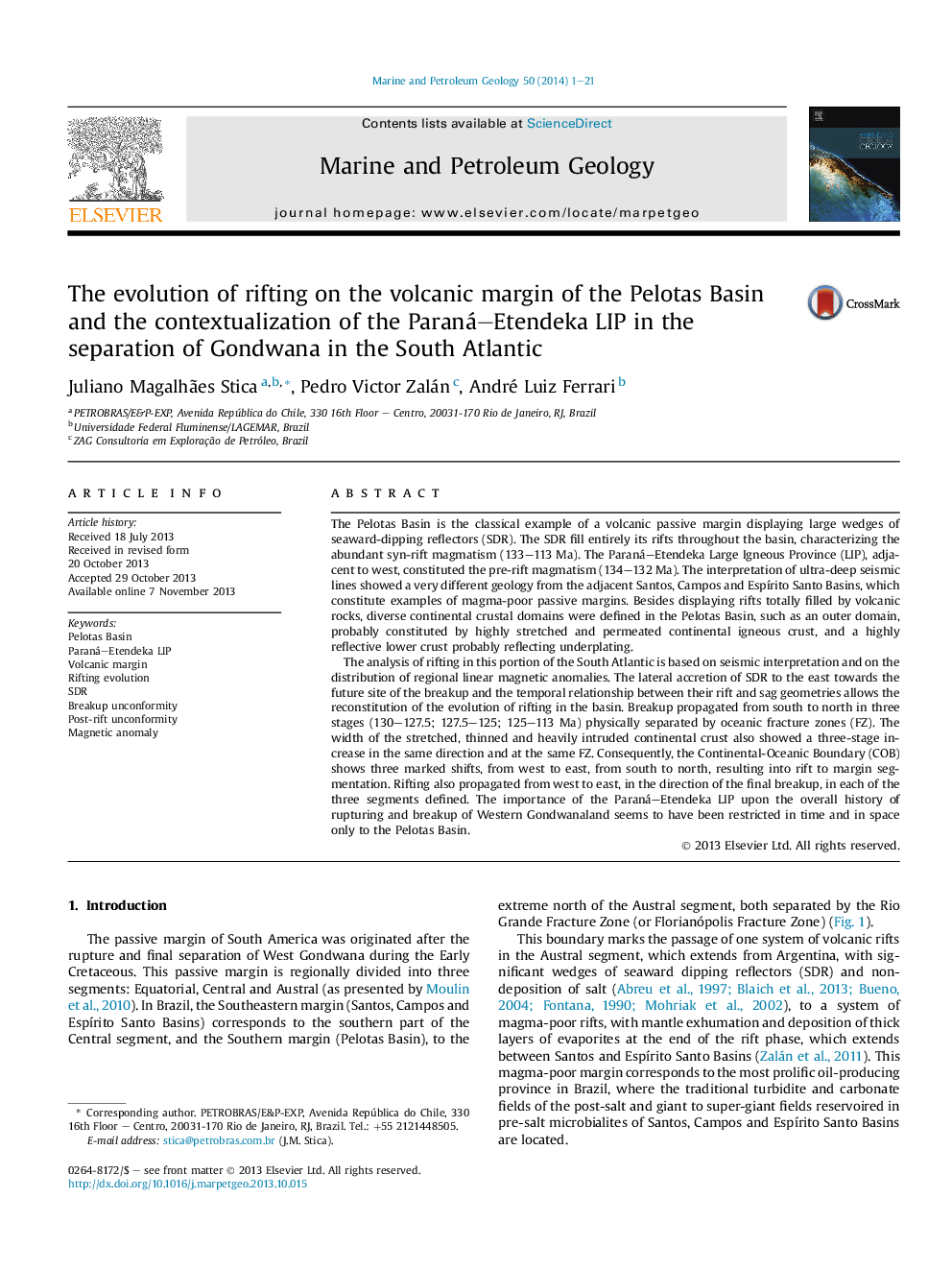| کد مقاله | کد نشریه | سال انتشار | مقاله انگلیسی | نسخه تمام متن |
|---|---|---|---|---|
| 4695667 | 1637174 | 2014 | 21 صفحه PDF | دانلود رایگان |

• We interpreted a regional data set of ultra-deep seismic in Pelotas Basin.
• We unraveled the development of SDR during rifting.
• The rift shows migration of activities towards the future site of the breakup.
• The evolution of the COB, segmented by fractures/transfer zones.
• The Paraná–Etendeka LIP as having restricted contribution to the Gondwana breakup.
The Pelotas Basin is the classical example of a volcanic passive margin displaying large wedges of seaward-dipping reflectors (SDR). The SDR fill entirely its rifts throughout the basin, characterizing the abundant syn-rift magmatism (133–113 Ma). The Paraná–Etendeka Large Igneous Province (LIP), adjacent to west, constituted the pre-rift magmatism (134–132 Ma). The interpretation of ultra-deep seismic lines showed a very different geology from the adjacent Santos, Campos and Espírito Santo Basins, which constitute examples of magma-poor passive margins. Besides displaying rifts totally filled by volcanic rocks, diverse continental crustal domains were defined in the Pelotas Basin, such as an outer domain, probably constituted by highly stretched and permeated continental igneous crust, and a highly reflective lower crust probably reflecting underplating.The analysis of rifting in this portion of the South Atlantic is based on seismic interpretation and on the distribution of regional linear magnetic anomalies. The lateral accretion of SDR to the east towards the future site of the breakup and the temporal relationship between their rift and sag geometries allows the reconstitution of the evolution of rifting in the basin. Breakup propagated from south to north in three stages (130–127.5; 127.5–125; 125–113 Ma) physically separated by oceanic fracture zones (FZ). The width of the stretched, thinned and heavily intruded continental crust also showed a three-stage increase in the same direction and at the same FZ. Consequently, the Continental-Oceanic Boundary (COB) shows three marked shifts, from west to east, from south to north, resulting into rift to margin segmentation. Rifting also propagated from west to east, in the direction of the final breakup, in each of the three segments defined. The importance of the Paraná–Etendeka LIP upon the overall history of rupturing and breakup of Western Gondwanaland seems to have been restricted in time and in space only to the Pelotas Basin.
Figure optionsDownload as PowerPoint slide
Journal: Marine and Petroleum Geology - Volume 50, February 2014, Pages 1–21